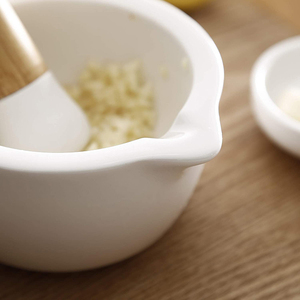(28998 products available)



















































































































































































White mortar is a binding substance created by mixing water, fine aggregate (usually sand), cement, and possibly other additives. It has several critical applications in construction, especially for providing structural integrity to bricks and stones. Additionally, it comes in distinct varieties and formulations.
White Portland Mortar:
This is a common white mortar used for bonding bricks and stones. The pigmentation of this mortar is essentially obtained from white Portland cement. It is mostly utilized in constructions where aesthetic appeal is important.
Lime Mortar:
Due to its flexibility, breathability, and resiliency to cracking, white lime mortar is an excellent choice for masonry work. A defining characteristic of lime mortar is that even as it hardens, it retains a certain degree of flexibility. This helps to absorb impacts without resulting in cracks in the structure. Another great feature of lime mortar is its ability to breath. Unlike other mortars, water is allowed to escape from the building. This reduces the risk of water being trapped inside, which in turn lowers the chances of decay. Finally, as previously mentioned, lime mortar is highly resilient to cracking. It can expand and contract in response to temperature changes without forming cracks. This makes it an ideal choice for use in historic buildings and gentle replacement where rigid materials would cause damage.
epoxy mortar
This is an adhesive formed by mixing resin, hardener, and fillers. Epoxy mortars feature unusual interfacial bonding capacities. They are resistant to a variety acids, alkalis, and solvents. Additionally, epoxy mortars have high strength and durability, making them ideal choices for severe service applications. Finally, epoxy mortars are not just rigid and strong, but also easily adaptable to a variety of applications through the inclusion of different fillers and additives.
Thin-Set Mortar
Sometimes referred to as a grout bed, thin-set mortar is often utilized in laying tiles. As the name suggests, it is a very thin layer that is used to exert pressure on the tiles so as to secure them into place. Thin-set mortar usually has cement, sand, and water-retention additives. Generally speaking, there are three basic kinds of thin-set mortar: modified, unmodified, and large and heavy particle.
Modified White Mortar
This type of mortar contains polymers that improve its adhesion, flexibility, and workability. Modified white mortar is frequently used in building and repairing projects where strong adherence and adaptability are essential.
Unmodified white mortar
This is a type of mortar not made with any additives. Unmodified white mortar is usually employed in traditional building projects where standard adherence requirements are needed.
large and heavy particle white mortar
This type of white mortar is designed for use with heavy, large-format tiles. It has improved coverage and support for these kinds of tiles. Moreover, it usually has enhanced sag resistance to maintain the tile's place.
Because of its aesthetic appeal and myriad applications, white mortar has become a great choice for construction projects and high-end renovations.
Aesthetic construction and restoration
White mortar is renowned for its aesthetic appeal and is primarily used in visible joints andload-bearing structures to provide a cohesive appearance. White mortar is the ideal choice when prioritizing the visual over the structural for non-load-bearing walls. The combination of stone, marble, or granite and white mortar results in a stunning architectural gem that architects and designers love.
Tile setting
White mortar serves as an adhesive for tiles, particularly those that demand high aesthetic standards, such as porcelain and glass. Moreover, it is employed as a grout to fill joints between tiles and achieve a seamless and polished look.
Landscaping and outdoor hardscaping
In landscaping projects where aesthetics are paramount, white mortar can visually enhance stone or brick pathways, patios, and garden features. It can create attractive joints that complement outdoor designs.
Artistic applications and sculpture-making
White Mortar is often used to create sculptures, installations, and artistic expressions for sculptures, collages, and artistic expressions requiring a fine and smooth binding material. White mortar allows artists to achieve intricate details and preserve the integrity of their materials.
Historical preservation
When restoring historic buildings and monuments, white mortar is often used to match the original materials and maintain the structure's historical accuracy. Its color and texture make it suitable for delicate restoration work where preserving the original appearance is crucial.
Four main factors should be considered when choosing mortar mix and color for masonry and mortar joints: design and style, technical and structural needs, regulatory requirements, and cost.
Q1: How can one improve the flow of thin-set mortar?
A1: Add water to the dry mix to improve the flow. Alternatively, one can also add a mortar admixture as per the manufacturer's recommendation.
Q2: What is the shelf life of white mortar mix?
A2: Mortar mixes typically have a shelf life of 6 months when stored in a dry place. However, это is always best to check the expiry date on the bag.
Q3: Can white mortar be used for all types of stones and bricks?
A3: No, white mortar is not suitable for all stones and bricks. Its use is determined by the chemical composition and some other factors.
Q4: What is the strength of white mortar?
A4: The strength of white mortar depends on the mix design but is usually around 7 MPa when cured.
Q5: Can white mortar be repaired if it gets damaged after drying?
A5: Unfortunately, if white mortar gets damaged after drying, it can't be repaired. However, preventive maintenance can be done to avoid damage.